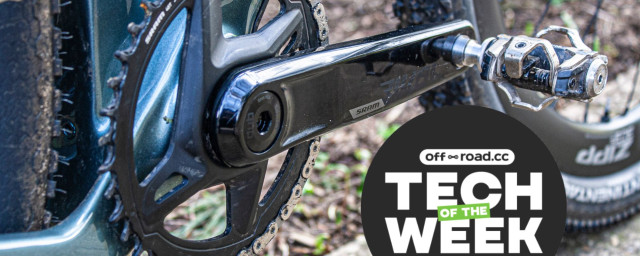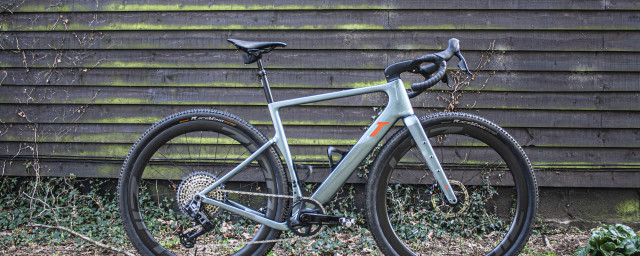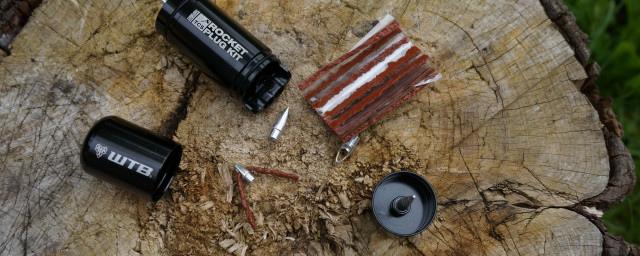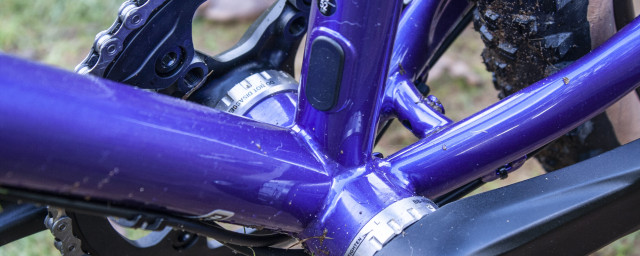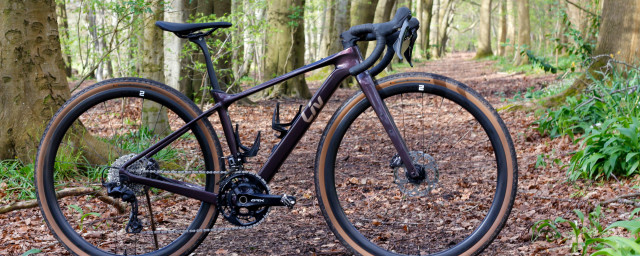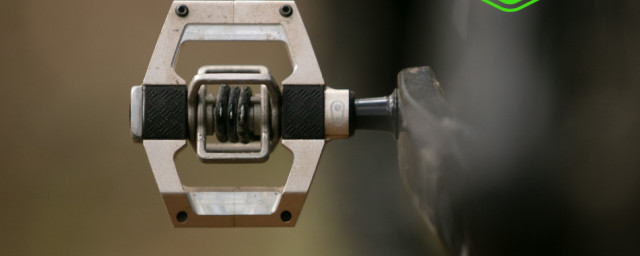There are a lot of people who view a power meter as some kind of ultra-exotic part that only applies to racing at the highest level. If you fall into that camp, think again. No matter the kind of riding you do, adding one of the best power meters to your bike is a great investment. For some people, it's only a way to help with pacing and make sure you've got enough energy to enjoy yourself. For others, it is a way to get faster and ride farther. It can also be a great way to track your performance over the years keeping an eye on how your strengths and weaknesses change.
- Best cycling computers 2023 - top options for mountain bikers
- Komoot vs Strava - which cycling app is best for you?
- Best cycling apps 2023 - top options for iPhone and Android
Whatever your reason for acquiring a power meter, the big question is where to add it. There is certainly a draw to the ease of pedals but, especially off-road, choosing a crank-based system means better protection and a greater choice of pedals. For those who prefer to take advantage of those advantages, Rotor has an option.
The latest crank-based power meter from Rotor is the 2Inpower SL. The system is a beautiful CNC design with true right and left power measurements. It's light, though the lightest is maybe a bit of a stretch, and it's accurate. Keep reading to see if the Rotor 2Inpower SL makes sense for you and your riding.
Rotor 2Inpower SL power meter - Technical details
The first thing you have to understand about crank-based power meters is that they are not all the same. A crank has a few different places you can measure power and, depending on what choice a company has made, the result can be vastly different. In most cases, if the power meter is on a crank then it's capturing your entire power output from both legs. From there, some systems will use software to designate which leg is putting out the power at any given time. Rotor isn't doing that.
The Rotor 2Inpower SL power meter uses a total of eight strain gauges. Four of the gauges measure power from the spindle. The other four strain gauges measure power in the drive side crank arm. That allows true right and left power measurements with no potential for mistakes.
That distinction is why you might see the claim, "lightest dual-sided power meter" and think it's no big deal or maybe a mistake. The Rotor 2Inpower SL power meter with a 172.5 crank arm length weighs in at 636g in a 1x configuration with a 42T chainring or 716g with 50/34T chainrings. You can get lighter options with a SRAM Red 2x crankset and the SRAM Force 1 AXS power meter crankset comes very close at 644g for less money. The difference is that those cranksets don't offer true right and left measurements. You'll have to decide if that matters but it takes a bit of a deep dive to really understand the claim Rotor is making.
It's also worth mentioning that the 636g number represents a 15% weight reduction compared to the previous generation Rotor 2Inpower SL. That weight reduction is thanks to 7075-T6 aluminium and precision machining. 7075 is a harder aluminium which allows Rotor to use less material for the same end result.
The brand has then combined those big beefy-looking, but light, CNC crank arms with a direct-mount chainring system. There are no individual arms and bolts and a single piece of 7075 aluminium for the 42T chainring. At the centre of the system the chainring, single or double, attaches with a system reminiscent of a centre lock disc brake.
Inside of the chainrings is also where you will find the electronics. From the outside what you see is a cover but the IP67 rating isn't dependent on that cover as it doesn't actually seal. The cover is only there to give a little protection to the magnetic charging port that sits in the centre. The battery inside is enough to provide 250 hours of riding after just three hours of charging.
The weight of the 2Inpower SL isn't the only detail Rotor claims is unique. Like every brand that sells power meters, Rotor loves to talk about the accuracy of the 2Inpower SL. For Rotor, the claims stem from the fact that the brand is well-known for oval chainrings. You don't have to use oval chainrings (I stuck to round) but, to make them work, Rotor collects more data. Instead of sticking with the ANT+ max of two data points per second, Rotor collects 50 data points per second and then bundles them. Given that power measurement is a function of rotational speed, that should add up to more accuracy. There's a hitch though and it can't go unmentioned.
On the face of it, more data collection should mean better accuracy. Rotor doesn't claim better accuracy in the official specs. Instead, the 2Inpower SL is only accurate to +/- 1.5% putting it behind the claims of other companies. I spent a long time with Rotor, including some time with engineering, trying to pin down what seemed like a mismatch. In the end, I'd say Rotor is being conservative and other brands seemed to agree.
Obviously, no one is going to go on record and say that Rotor has an equally accurate product but other brands did corroborate the reasoning why that number isn't that important. After talking to Rotor, I also talked to SRM and Power2Max. In each instance, the brands said that the accuracy number is somewhat arbitrary.
Bottom line, it's easy to measure power perfectly when you've got a weight pushing in one direction. That's not how cycling works though. Instead, the power you put through your bike is messy and there is no consensus in the industry about how to understand it. There are losses in the system as well as lateral forces and power that don't contribute to forward movement.
While the maths side is very clear cut, that doesn't give a real picture of what's happening. You'll have to decide how to interpret that since there are some companies that claim higher accuracy. Again keep in mind though that brands claiming higher accuracy, at least in cranks, aren't truly measuring left and right power.
Rotor 2Inpower SL power meter - Performance
Ultimately, we can believe anything about why Rotor lists an accuracy spec that's less than other brands. What actually matters is how accurate the Rotor 2Inpower SL actually is in use. To get there though, I had to start with installation.
Rotor includes the tool you need for the direct-mount chainring. Slide the chainring on the spindle and note the correct alignment using the small dot and printed lines on the inside of the crank arm. Next, slide on the fixing nut and use the included tool along with a bottom bracket/centre mount brake rotor lock ring tool to snug it up. There's a bolt on the non-drive side that you'll need to torque up and a pinch bolt and spacers to help take up side-to-side movement. When you've installed it, you'll need to pay attention to the zeroing procedure.
After you've paired the power meter, just pedal a bit and once the crank connects to your computer jump off your bike. First, set the crank with the drive side vertical and do a zero procedure through your computer. Next, rotate the cranks backwards twice and do it again. That's it, you should be good for around 20 hours – then it's recommended you do another zero procedure.
There isn't currently a Rotor app to use during this process. Instead, I used a Garmin head unit to complete the process. Unfortunately, that also means there's no after-ride analysis to report on. Being a true dual-sided system does mean that something like Garmin Connect can track left/right power at every point in the ride but you do lose out on some of the stroke analysis that Garmin pedals would have.
Once everything is set up, you'll find this is a particularly stiff crank. I would have sworn you can't tell crank stiffness and, it might be chainring stiffness I'm feeling, but there is a difference in this crank. I don't put out a lot of power and would never have expected I would notice but Rotor confirmed its testing showed it to be rather stiff. You can only tell with a back-to-back comparison but you can tell.
As far as accuracy goes, I tested against two different power meters both of which have a 1% accuracy spec. Dual recording rides on both Wahoo Power Link Dual and Garmin RK200 pedals showed only small power differences. In each case, the pedals and the crank were too close in average numbers to raise any eyebrows. There are small differences but even when zoomed in, the pedals track the general shape of the power graph from the crank and the numbers never differ more than 5 watts.
Rotor 2Inpower SL power meter - Verdict
The Rotor 2Inpower SL makes it incredibly hard to pick apart any detail that needs addressing. You've got a solid battery life and no potential for battery door issues. There's an elegant chainring mounting and a wide array of options you can pick from for gearing. It's true that there's no app right now but I also didn't feel like I was missing anything by not having it. The accuracy spec could be a big deal but there was an explanation from the engineering team and in my testing, the numbers were right on. The real choice is going to come down to your needs and the pricing.
Rotor makes the claim that this is the lightest dual-sided power meter. It's a bold claim that seems difficult to back up given that pedals are dual-sided and lighter as a system. There also starts to be a lot of potential "what about this crank" claims. In the end, though, it doesn't matter a whole lot. What you get is certainly one of the lightest dual-sided power meters on the market and the bigger question ends up being, do you need dual-sided measurement?
While there is a big difference between a single-sided system, such as Stages or 4iiii, there's not such a big difference with other crank-based systems. You can spend less and get very close to the weight of the rotor system with equal accuracy. You'll just have to decide if you really need to know exactly the power each leg is able to put out. If so, the Rotor 2Inpower SL is one of the only options available and it's a great choice.







